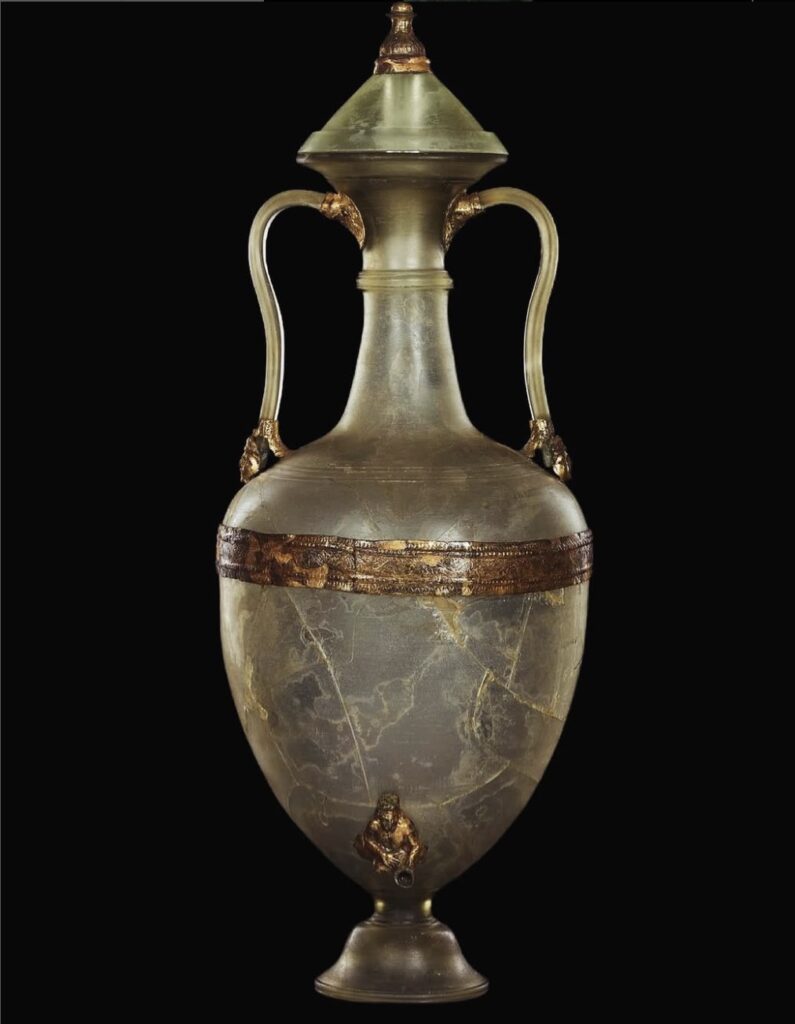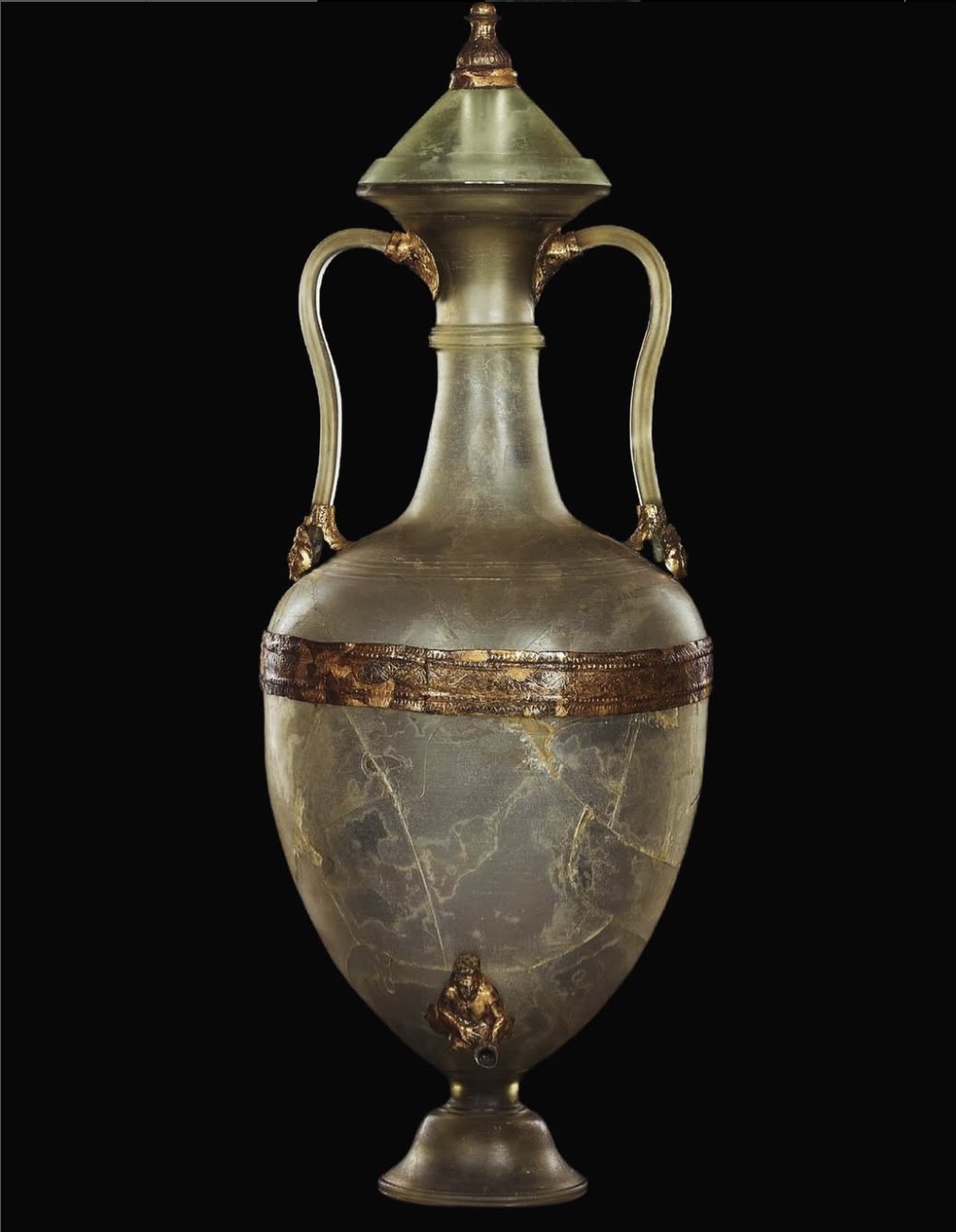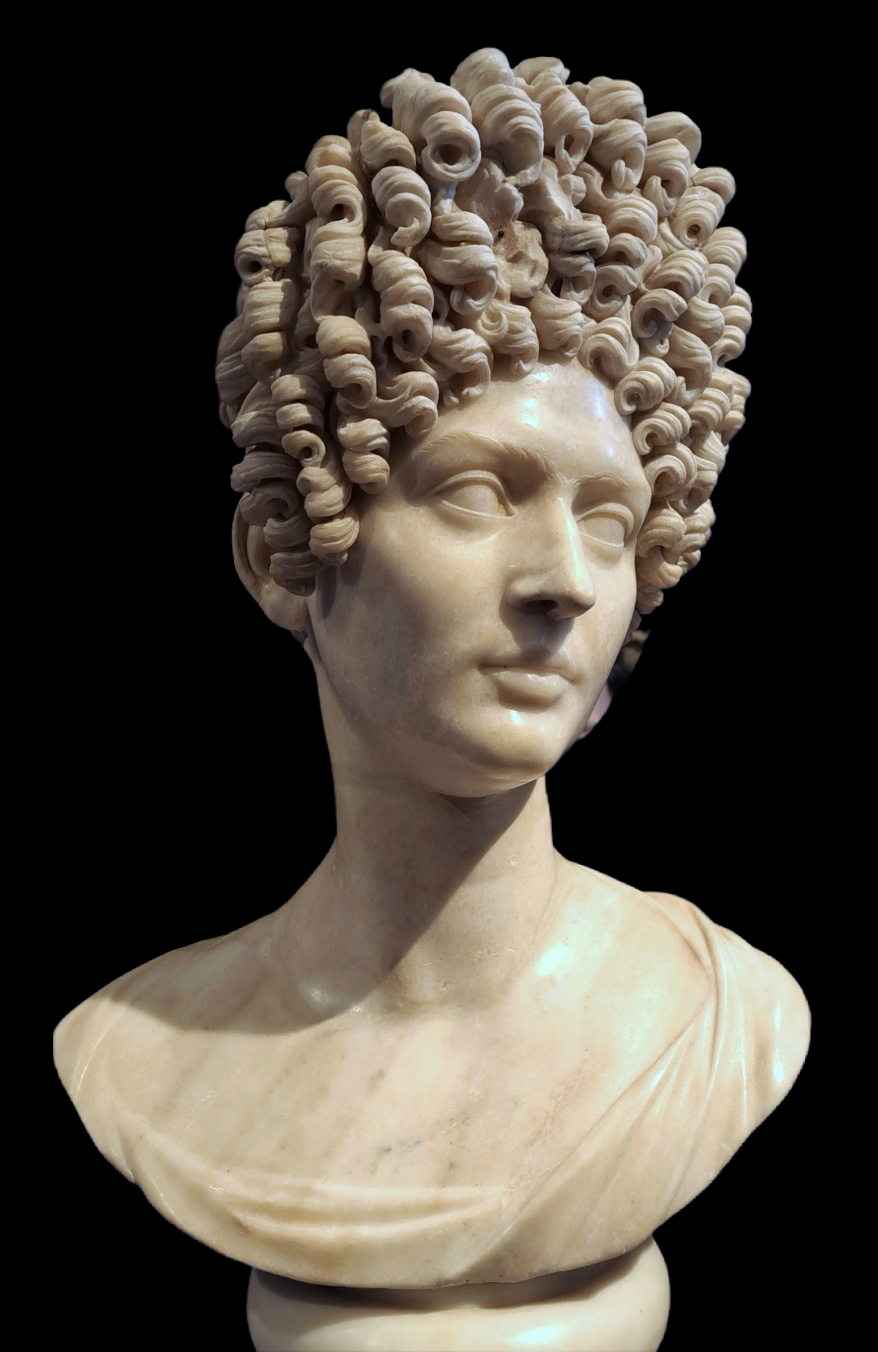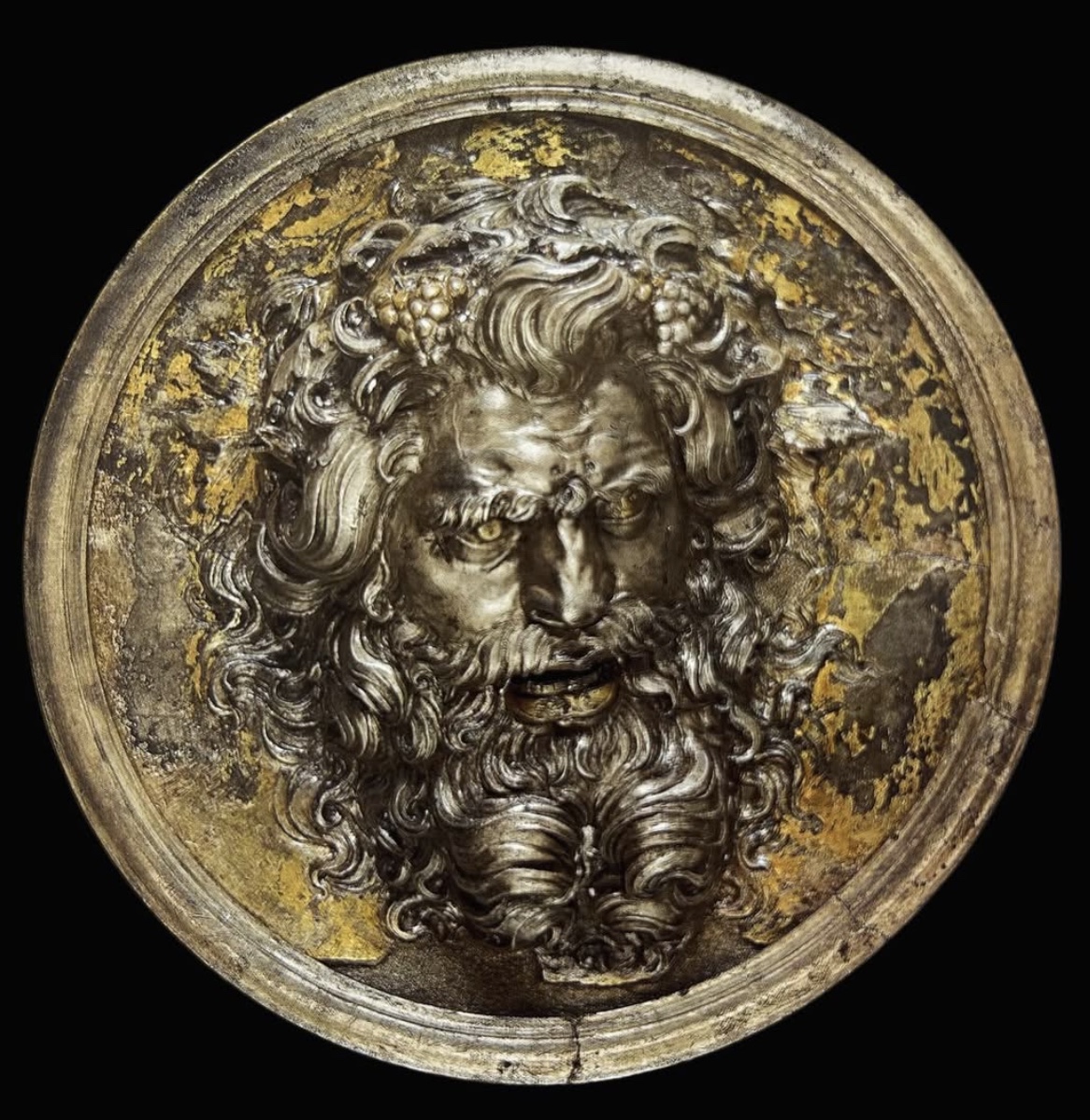For all the rich hues glass could take in Antiquity, sometimes the colorless, translucent variety is the most impressive. This astonishing amphora from the 2nd century B.C. Is perhaps the most impressive of all.
It’s a whopper at well over half a meter tall, and its size and lack of color were innovative flexes making this amphora the height of Hellenistic luxury tableware. Before this period, glass vessels were typically small and restricted to little core-formed shapes (alabastra, amphoriskoi, aryballoi, and the like). Big, translucent glass vessels were inspired by Persian antecedents encountered by Alexander and his army, and the new Hellenistic capital cities – Alexandria leading the charge, as always – in driving glass innovation.

This one was neither core-formed or blown (that technology would come later), but rather cast in sections, joined together with decorative gilt-bronze strips. It was found in Olbia (the city’s name meaning ‘rich’ or ‘blessed’) on the Black Sea, perhaps even when that region was ruled by the gorgeous and glamorous Mithridates Eupator.
A fortuitous survival that fires the imagination, no?




